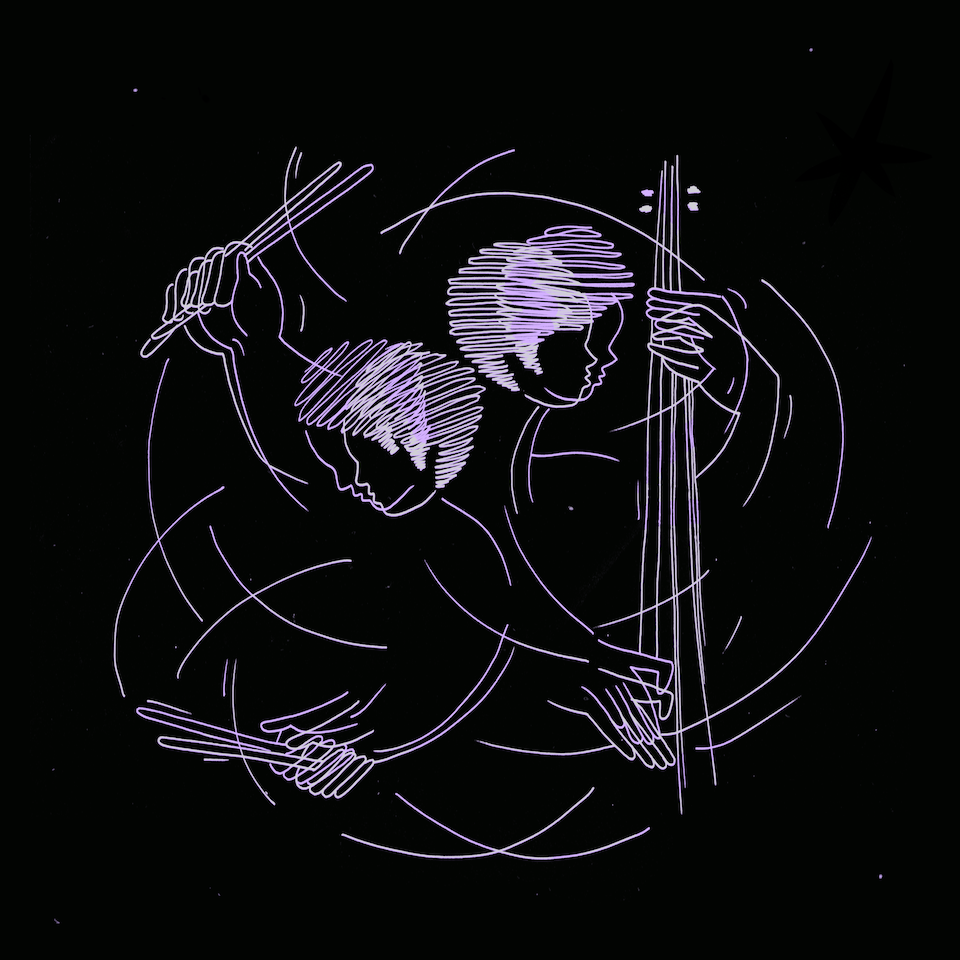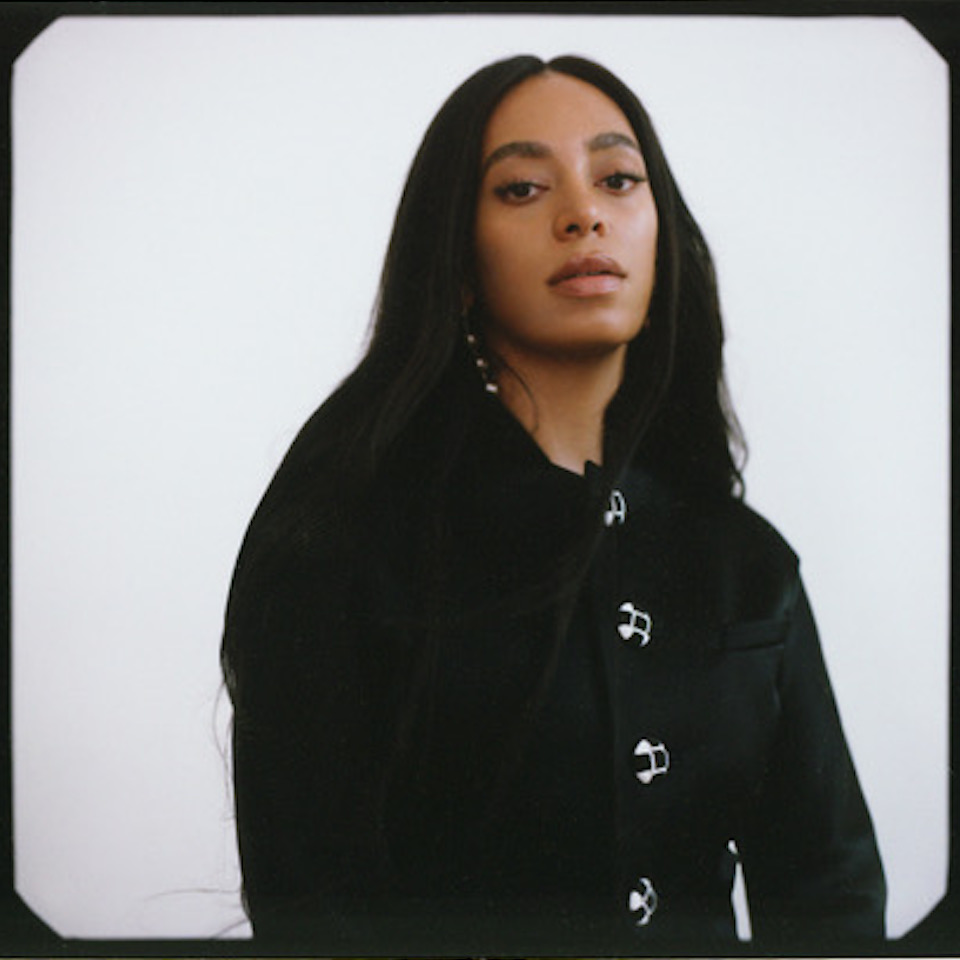
Jacob Collier on managing the complexity of virtual collaborations
Published on September 24, 2020
For most musicians, touring is life. Concerts are often the most reliable way to build an audience and earn a living. But when the pandemic caused widespread cancellations, musicians had to pivot fast. For Jacob Collier, the pivot seemed more like a U-turn.
As a teenager, he built his following online. When the fantastically complex harmonies of his multi-screen videos caught the eyes and ears of legends like Herbie Hancock and Chick Corea, he was invited to play his first live solo show at the 2015 Montreux Jazz Festival, where he was introduced by Quincy Jones.
Since then, the multi-instrumentalist has gone on to release four albums, beginning with 2016’s In My Room, featuring Jacob on every instrument and every lead and harmony vocal. As he began planning his follow up, Collier made his first pivot and designed the four-volume project titled Djesse to be maximally collaborative and exploratory.
When we first interviewed Collier in 2018, we learned about his evolution from one-man band to global collaborator in the production of Djesse Vol. 1. This year, as he was preparing to release Djesse Vol. 3, the pandemic pulled his plans out from under him. He found himself having to draw heavily on his early experiences working by himself at home. Here’s how the lockdown inspired Collier to find new ways to coordinate contributions from a worldwide distributed band.
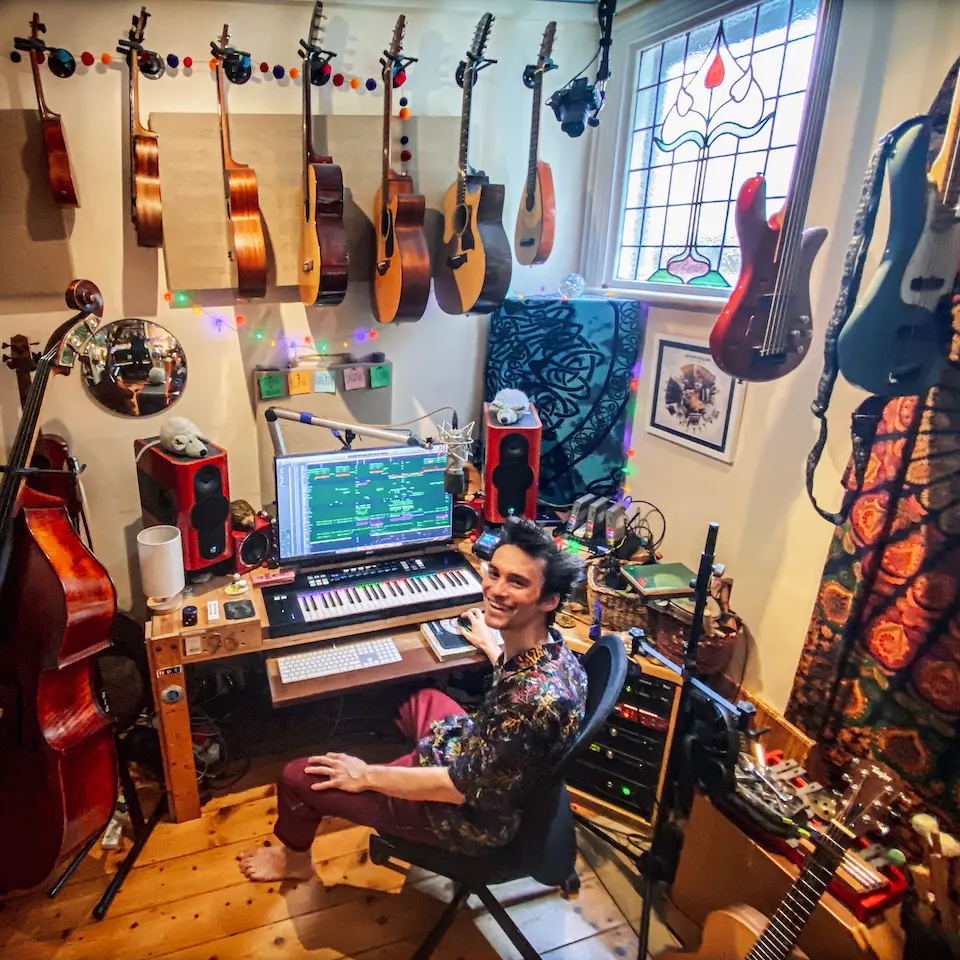
Now that working from home alone is less of a choice and more of a necessity, how does it feel to be dealing with the complexity of your virtual collaborations?
COLLIER: I worked for so many years alone. I loved that process, but I decidedly moved away from it for this project because I wanted to work with others. So I embarked on the orchestra recording, zooming around the world, recording people while I was on tour. I’d come home from my travels and put the sounds I’d been saving in Dropbox into the sessions.
Suddenly, four days before my tour rehearsal was planning to commence, the whole thing got cancelled. I kind of enjoy the process of having to roll with something that's not expected. You have to come up with some magic that can continue even though things are not continuing.
It was just a fascinating experience to turn back to some of the skills I'd been developing when I was a younger musician, but with the kind of intelligence that I've been trying to work on gaining from these myriad collaborators from all around the world in their varying forms. It's been a lot of work. It's been complicated in a number of ways to source energy and inspiration. But what I've loved is the time to dig into the process of working on this album in a way which is not so distracted by plane journeys and constant wheel turning.
I would’ve delivered the album in mid March if I'd gone ahead with the plans. Luckily, I had these four months to work on the music. Just the sheer width of collaborators from which I've been storing inspiration and files has increased massively. There are so many examples of people who sent me their files remotely. T Pain did that for “Count The People.” Ty Dolla $ign and Mahalia did that for “All I Need.”

“What I've loved is the time to dig into the process of working on this album in a way which is not so distracted by plane journeys."
In some ways, the most interesting example is the song called “In Too Deep,” which features an incredible singer called Kiana Ledé. For Kiana, it was a challenge because she'd agreed to do the song before the [lockdowns] happened.
I ended up sending her a microphone in the post with a sound card. After she got this gear, I jumped on FaceTime, and said, “Okay, this is how it works.” I enabled her to install Logic on her machine. So she kind of installed my workstation in her home. Then using remote desktop, I was able to engineer the whole session remotely. We were able to go through the song and repeat certain phrases to get a certain inflection.
It was just so instantaneous, creative, and cool—and it was so real time. I sat on FaceTime on mute, hearing her audio come from my speakers, watching our Logic, doing all of the clicking and dragging. I uploaded those files to Dropbox, sent myself a link in email, and I was good to go. That was really rad just to realize that that's possible.
I've been so grateful that the technology has evolved to the point that it has this year. If we had a pandemic five years ago, we couldn't have done any of this stuff. Nowadays, it's cool because you don't need crazy amounts of gear to make cool stuff. If you want to make something meaningful, you can. You just have to be determined to go the extra mile to do that.
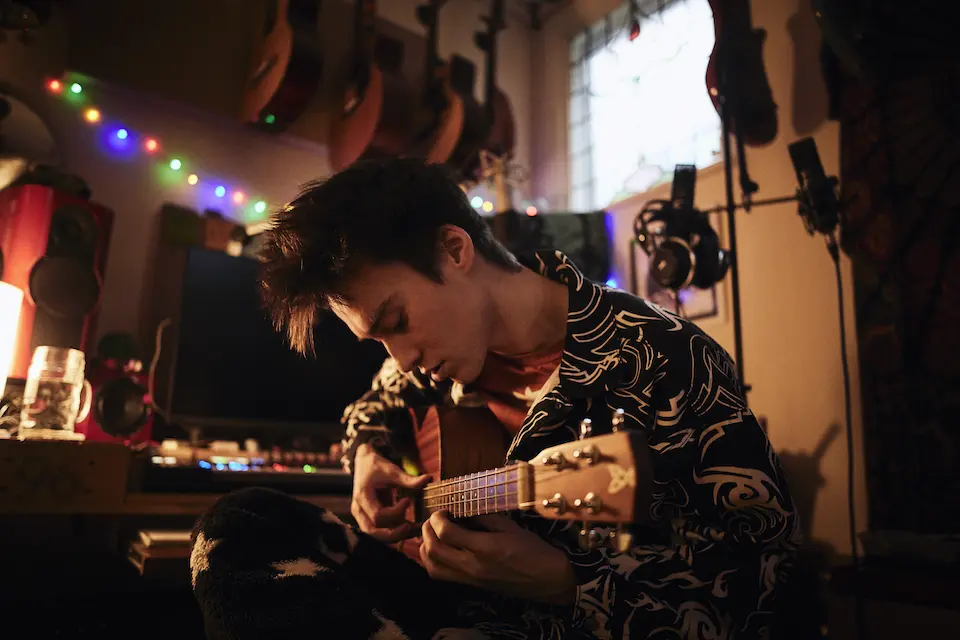
“The challenge for me as a collaborator is to render myself as transparent as possible."
A lot of modern music is criticized for being simplified and formulaic, but you found success by running in the other direction. How do you communicate complex ideas to your collaborators?
For me, it's always been interesting to think about what makes something complex and what makes something simple. Take a flower, growing in a field. You think, “The flower is just a flower. It’s a simple thing.” But then if you zoom in, there's so much intelligence about the design of a flower, which to me is extraordinary. To describe the flower as simple or complex, in some ways misses the point because the flower itself is such a multi-layered thing. But the beauty of it is that it can stand and be a flower without needing to be anything beyond a flower.
In terms of music, I think, “How can you achieve something that comes across as just itself, but is able to operate on all these different levels.” So I listen on all sorts of different levels when I'm getting inspired.
There are all sorts of nuances that different people respond to in different ways. When you're collaborating with an orchestra of 60 musicians who were trained classically, the way you describe intention is different from someone like Ty Dolla $ign. Ty is used to responding to a feeling which is within production. He gets excited about a particular nuance of sound or harmony or groove which inspires a feeling inside him, which brings things out of him. He doesn't really think too much about it. He just responds. Either it's a vibe or it's not a vibe. So my job is make it be a vibe.
Whereas, with an orchestra, if each individual musician were thinking, “What is it that I personally can bring to this that's meaningful to me,” it would fall apart because an orchestra is a community of musicians. So the way you describe an emotion or feeling or intention changes, because it's more about the whole picture. I get a kick out of the fact that the two are speaking the same language, it's just how you access the language that’s different.
“Either it's a vibe or it's not a vibe. So my job is make it be a vibe.”
Chris Martin [of Coldplay] is an amazing example. If you dig into aesthetically what Chris likes, he's a sucker for these walls of harmonic joyful moments. A three-note chord is almost as joyful as it gets. Working with Chris, it's like, “How do I bridge my universe to his universe here, utilizing some of those sounds that we share and also challenging each other a bit.
He grounds me back down to earth when I want to go off and spend time in the upper echelons of the complexity. He's like, “No, no, here's the song. It’s here.” I need to be reminded of that sometimes. On the other side, I’ll take something he’s done and say, “Look, you can apply this height here. It can be expanded and exploded and extended.” Then he gets excited about that, too. So it's always about finding that balance between how much you want to dictate and how much you want to allow.

“The whole process of collaboration was a deliberate experiment to get me out of my own way and learn how many bridges exist between all these different musical styles.”
Something I'm learning is just how much room you leave in the room—whether it's a physical room or a virtual space—for the collaborator to bring a part of himself or herself to the music. Some people like to have a lot of instruction. Someone like Mahalia, we got on FaceTime or we were talking about riffs, she got to the point where she was like, “Can you voice note me the exact riff for this bit? I would like that.”
The challenge for me as a collaborator is to render myself as transparent as possible and provide a context where she can come up with her own ideas on her own terms. It's mind melting for me to view the whole thing through all these different lenses, from gospel choirs to rock guitar legends, to folk fiddlers, orchestras, R&B pop singers, rappers, trappers, all these different intelligences—all of it which are honestly very foreign to me. I can only speak from my own experience.
The whole process of collaboration was a deliberate experiment to get me out of my own way and learn how many bridges exist between all these different musical styles, which can feel very segregated and very separate, but actually, they're so similar.
It must be tough to communicate emotional intention to a group of people one at a time. How do you keep everyone on the same page?
In some ways, talking emotionally is almost the only thing you can rely upon. If you're in a room, you can say technical stuff with emotion and people can understand it more easily than if you're on Zoom. I find myself talking far more emotively than I would otherwise because I'm extending the means of communication to its maximum to try and get the point across. There's no one size fits all solution for energizing people remotely, but I think it’s about finding a sense of common ground and working with that.
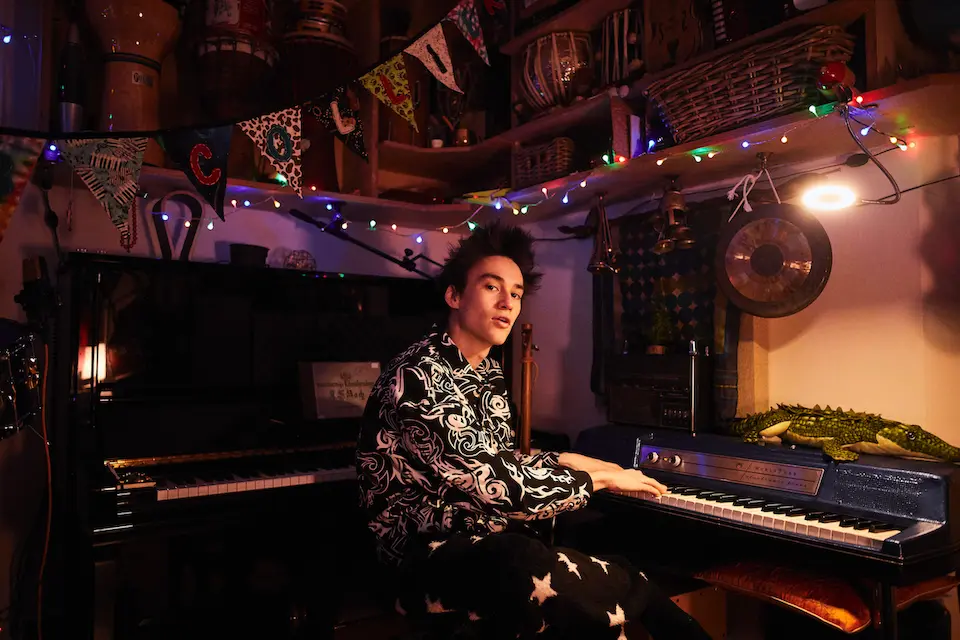
“Those moments where you feel like your mind is being changed, they don't feel like times where I’m getting smaller. They feel like times I'm getting bigger.”
If I collaborate with someone, and they bring a part of myself to the song, the whole thing was kind of a waste of time, you know? My job is to say, “Here's a framework or a space. How do you feel this can evolve? What could you bring to this within these kinds of premises?” Part of the challenge is learning how to read those signals. Because people are really nice on Zoom. When you're in real life with someone, you can read the body language. I had to learn the subtle art of reading someone's real intentions over Zoom, when it comes down to things that really make or break something in terms of gesture.
I think the job of someone who's in charge of the beginnings of the process, is to encourage an environment where it's cool if something doesn’t work. Because a lot of that stuff is the friction that creates the spark that makes the idea happen. The myth that the frictionless environment is the most effective is just not true. It's not true in your life, it's not true in your workflow, and it's not true in your music.
I think it's important to remind each other of that because otherwise, it's like, “I've got a call, and if it's not 99% efficient, then I'm wasting everybody's time.” Whereas in reality, when we're all sitting around around a desk or a table, it's the time when you're not doing much, or you start talking about some random thing—that's where the magic happens. That's where I feel a bit starved because it's hard to not do much on Zoom. There's always a reason why you're on Zoom.
“The myth that the frictionless environment is the most effective is just not true. It's not true in your life, it's not true in your workflow, and it's not true in your music.”
It sounds like you lean into obstacles as an energizing force when you come up against something unexpected. Do you see it as an opportunity for growth as opposed to a blocker?
I've been stuck here with my family for six months, right? I love them to pieces, but when you spend six months with a family, there are times where you disagree and start rubbing on each other's nerves and stuff. That for me and for my whole family, it's just been such a cool opportunity to really get to know each other better. Because it's like, when you start rubbing against each other, in that sense, a feeling comes up like “I don’t like this. I’d rather go and hide away.” Staying with that is a powerful way of getting to know yourself and others, deepening conversations and relationships.
I think it's so important to embrace conversations, particularly ones with people who make salient points with whom you don't agree. That's when you really learn stuff. “You think this and I think something different. Change my mind. Let me come into your perspective.” You don't need to feel threatened by that. Because it's not like you as a human being are weakening as your opinion is changing. I think it's an amazing point in history with this pandemic to become peaceful with not being certain of things.
Those moments where you feel like your mind is being changed, they don't feel like times where I’m getting smaller. They feel like times I'm getting bigger. So I almost seek them out now. This time last year, I would have not sought contact, but now it's like, “Wait a second, let me lean into that and examine the feeling.” Because it's cool—I can alchemize that friction. I can make an idea out of it. Because when a wheel is turning on a road, it needs that friction to move. If everyone agrees with everything and everything was always to plan, nothing would ever move forwards.
“That's where I feel a bit starved because it's hard to not do much on Zoom. There's always a reason why you're on Zoom.”
How did you use Dropbox during the making of Djesse Vol. 3?
I keep the entirety of my file system in Dropbox. I use 18.2 terabytes worth of data. Most of that is audio files and video files because I edit a lot of my own videos. Across the process of making an album, there's so many different kinds of file exchanges that need a place to live. For me, that has always been Dropbox, but I've really realized in the last few months, just how much I rely on it. A lot of the mixing within this album I did alongside a very dear friend and close collaborator whose name is Ben Bloomberg.
Ben asked me to go into the studio. He has a laptop and two speakers, which are equivalent to my speakers here. We've been backing and forthing in a whole new level with this album, The sheer amount of depth we went into with sonics on this particular project blew everything I've ever done out of the park.
The way it works is, I’ll make a piece of music. I tend not to hold back with numbers of tracks in sessions. In this album, the number of Logic tracks and sessions vary between about 300 and 700. Ben is able to open those sessions over in Boston and design certain sounds. For example, he can sculpt to the high end of this track in Neutron. Or he can add this LFO tool to the dynamic curve of this track. Or he can get this track to talk to this track in terms of gating—all these fine-tuning things he's just so expert at. I can spend my time focusing much more on the basic gestures and zooming into the musical things that make it tick.
“I find myself talking far more emotively than I would otherwise because I'm extending the means of communication to its maximum to try and get the point across.”
The workflow of having my entire album synced on his laptop at all times means that if I say, “Ben, I've just sampled these garden sprinklers (on the song “Count The People”), but they don't sound spectacular. How do I get this to sparkle?” Because it's all there, he could just open up the session, and we’d work in tandem with each other. He says, “Okay, if I work on the sprinklers, you work on the bass, then I'll bounce up sprinklers, and smash them into the session, and voila!” That process was so cool. It meant that I could be double efficient in the way I was spending my time.
If he says, “I'll drive for a moment,” I can take my hand off the mouse, and he'll move my mouse around, clicking and dragging and changing things. Then he'll press play and I'll hear the auditions on my machine. That concept is so cool—latency of under a second.
He can be on FaceTime and Source Connect with basically equivalent latency. Then I’ll go to sleep at 3am my time. Then he can open the session on his computer using Dropbox, work on it over the course of the night, then save it so that when I wake up in the morning UK time, it's fresh and ready in my Dropbox. That is just absolutely brilliant. It was a complete revelation with regard to the Source Connect / Dropbox combo. Being able to work in parallel on things was amazing. That is just not possible without Dropbox.
Djesse Vol. 3 is 462 GB, and the whole of Djesse (volumes one through three) is 2.55 terabytes.
Both of us have needed kind of a fast internet connection to be able to make this work, which luckily we both have. That obviously is just with regard to mixing because with someone like Ty Dolla Sign, Kiana, Mahalia or T Pain, it's all Dropbox links. So I'll send them of stems in Dropbox folder. They will send back a bunch of stems. I’ll throw it into my Dropbox where the album lives. Then I can drop into the session. The fact that everything can be organized in that way, just streamlines the whole process.
One final thing to mention—when I was traveling before quarantine, being able to save mixes offline on my phone and listen to them in numerous different contexts is super helpful. Because if I sat here listening to my studio monitors, I would get a very biased perspective. I have a sound system I use when I'm cooking in the other room, I can play stuff through there using my phone, or play it in Ubers. I play it in my own car with my family when we go on trips. I'll play out of the phone speakers. I'll listen to it on my Sony headphones and all sorts of things.
So being able to access things online using my phone, then save them offline when I'm traveling on planes and stuff is just so brilliant. Without that as a premise, I'd have to rely a lot more on my laptop, then it just slows [the process] down because I can't have it in my hand while I'm listening. When you're working on an album, you want to listen to it casually, as well as actively to check that it works on all these different cylinders. To have 18 terabytes in my pocket that I can pull up anytime, it's absolutely insane, and I'm so grateful for it.
